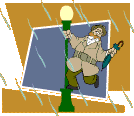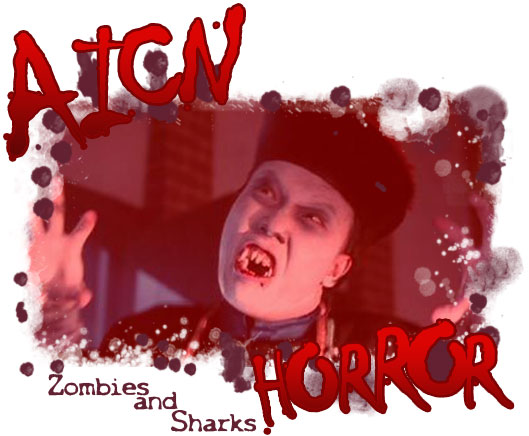
Hey folks, Ambush Bug here. AICN COMICS’ reviewer Lyzard sunk her fangs into Kim Newman’s classic book ANNO DRACULA and not only decided to review it, but also interviewed the author about his truly unique novel. Here’s what Lyzard had to say about the book, then check out her interview with Kim Newman below. Take it away, Lyz!

ANNO DRACULA Novel
Writer: Kim NewmanPublisher: Titan Books
Reviewer: Lyzard
Anyone who takes a gander at the Young Adult or Romance section of any major bookstore will see the shelves covered in vampire novels. It is quite clear that those markets are flooded with tales of the nosferatu. But that doesn’t mean there isn’t room to add one more classic to the pantheon alongside Sheridan La Fanu’s CARMILLA and Bram Stoker’s DRACULA. Mr. Kim Newman’s ANNO DRACULA is the perfect book to show readers that vampire literature will remain as long-lived as the very creatures they are about.
ANNO DRACULA is an alternative history of what would happen if Van Helsing and his rag-tag band of Victorian “hunters” hadn’t taken down the Count. In this case, Dracula would go on to marry Queen Victoria, in the process turning a good portion of London and bringing other lines of vampires out of the woodwork. In the year 1888, this new nightlife has become quite the norm. But not everyone is pleased by the vampire overlord and his children. The murderer “Silver Knife” has started taking down vampire prostitutes in the district of Whitechapel. But these seemingly unimportant murders soon gather the attention of very important people, both warm and cold.
I’m going to make a bold statement here. I believe that ANNO DRACULA is better written than Stoker’s original novel. I’m not saying that Newman’s book is better, I am merely saying that the style is much more accessible that the epistolary form that Bram chose. Really, when was the last time you read DRACULA? It takes awhile to get through Jonathan Harker’s traveling notes. Like Bret Easton Ellis’ AMERICAN PSYCHO, the action sequences are few and far between, even if those contained are horrific. What Stoker did well was create an epic mythos. The character of Dracula is the most pervasive vampire ever created. What ANNO DRACULA does better is that it entertains. This is achieved in several ways. The writing reflects the Victorian style of its predecessor, while still remaining accessible to modern day readers. Another element that stands out from ANNO DRACULA is the level of detail. References from Victorian history and literature to vampire films through the years are pulled and distorted to meet “the sick and depraved mind of” Newman. The reader will come across references from DR. JEKLY AND MR. HYDE, SHERLOCK HOLMES, to Murnau’s NOSFERATU. Even Oscar Wilde appears as a vampire, which truly does seem fitting for the flamboyant man.
If the book itself wasn’t already a great buy, there are additions made for this re-publication. In this new edition of ANNO DRACULA there is a list of annotations, in case you didn’t catch all of the elements of homage. There is also an alternate ending, two articles, and part of a screenplay Newman wrote adapting his own work.
In a world filled with teen vampire romances, ANNO DRACULA brings the horror back to the monster. This book is grotesque and violent, just as vampire literature should be. But don’t be scared by its size. Once you start reading this Victorian-era thriller, you will not be satiated until you reach the end. And even then, for those that feel that they needed more from the ending of ANNO DRACULA, do not despair. There are three more ANNO DRACULA novels to satisfy your thirst.
 Lyzard here. Kim Newman is the author of numerous non-fiction books such as NIGHTMARE MOVIES and analysis of DOCTOR WHO and the original CAT PEOPLE. His fiction includes the ANNO DRACULA series, along with many books written under his pseudonym, Jack Yeovil. ANNO DRACULA was first published in 1992 and now, at the height of this vampire craze, is being re-printed with added material.
Lyzard here. Kim Newman is the author of numerous non-fiction books such as NIGHTMARE MOVIES and analysis of DOCTOR WHO and the original CAT PEOPLE. His fiction includes the ANNO DRACULA series, along with many books written under his pseudonym, Jack Yeovil. ANNO DRACULA was first published in 1992 and now, at the height of this vampire craze, is being re-printed with added material.LYZARD (LYZ): How would you set ANNO DRACULA apart from the current influx of vampire novels?
KIM NEWMAN (KM): I’m not that well up on the current crop, though I will set to reading seriously since I’m working on a new ANNO DRACULA novel – and will want to take into account what’s happening in the sub-genre right now. I have read TWILIGHT and THE PASSAGE. I suppose it’s different in that it doesn’t just have one take on the vampire – it’s a whole crowd of dead and living characters who can’t really agree on anything, like normal people. It may be a little less solemn than most current vampire stuff, though I still think of it as a serious book. It’s hard to get a perspective on your own work. If it’s different, I suspect it’s down to others to say so and point out how.
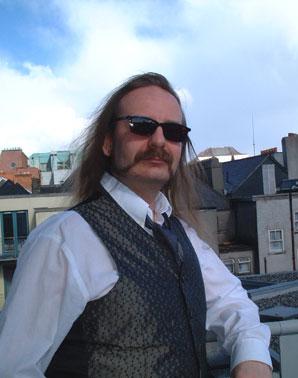 LYZ: If I had to describe this book to one of my friends, I’d say it was if Quentin Tarantino wrote an alternative history to DRACULA. I say this due to all the homage to various literary and filmic characters, and the violence of the piece. Would you agree?
LYZ: If I had to describe this book to one of my friends, I’d say it was if Quentin Tarantino wrote an alternative history to DRACULA. I say this due to all the homage to various literary and filmic characters, and the violence of the piece. Would you agree?KN: That’s a fair enough starting point. I’d finished the book by the time I saw RESERVOIR DOGS – which I reviewed early, since it was initially given a bigger release in the UK than the US. I was at a long-lead screening when no one had heard of Tarantino yet. I think it might make more sense to say that INGLORIOUS BASTARDS is like Quentin Tarantino doing a Kim Newman novel. As it happens, Tarantino appears as a character (in his video store clerk days) in the forthcoming fourth ANNO DRACULA book, Johnny Alucard (a lot of it’s set in Hollywood in the 1980s). At an awards ceremony, Tarantino made a point of seeking me out and telling me how much he enjoys my column (Kim Newman’s VIDEO DUNGEON) in Empire magazine, which I thought very decent of him. When I was working on Anno Dracula as a film project, I suggested that to differentiate it from other period fantasy films, it should avoid the usual orchestral score and have a ‘Victorian Tarantino’ soundtrack full of music hall songs, street singing, Gilbert & Sullivan, bad taste 19th Century ballads (there were a lot of sentimental songs about death, kind of like a precursor to the Teenage Death Songs of the ‘50s and ‘60s), etc. So maybe the comparison isn’t too wide of the mark.
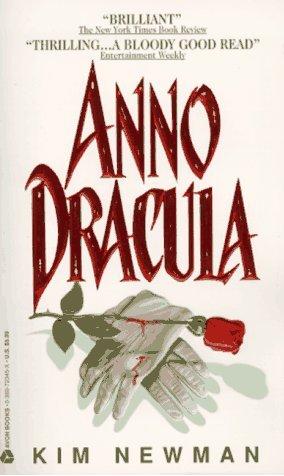 LYZ: Clearly, to achieve the style of language and the incredible detail, much research had to be done. What was your process in finding all of the characters to homage and creating your London of 1888.
LYZ: Clearly, to achieve the style of language and the incredible detail, much research had to be done. What was your process in finding all of the characters to homage and creating your London of 1888.KN: I wrote ANNO DRACULA in 1989-91, when I had barely heard of the internet – so it was a question of finding the reference books. Sally Mitchell’s VICTORIAN BRITAIN: AN ENCYCLOPEDIA was key, but also annotated editions of Stoker and Doyle by Leonard Wolf and W.S. Baring-Gould and selections from the huge shelf of books about the Jack the Ripper murders. I read a lot of Victorian and Edwardian fiction, beyond the obvious candidates – there are dollops of Arthur Morrison’s A CHILD OF JAGO and E.M. Forster’s HOWARD’S END in there. And the alternate world setting gave me the license to make stuff up, or tweak reality. I have the Ripper killings investigated by Inspector Lestrade rather than Inspector Abberline, because the fictional character had more resonance for me than the real one (this was before Alan Moore and Johnny Depp gave Abberline a bit more presence). Generally, in writing period settings – or even fantasy settings – I cast about for parallels or touchstones the modern reader will get: sometimes ironically, digging up a fact about the past that has a different meaning in a modern context (in the 1890s, heroin was a patent medicine prescribed over the counter for toothache – it probably worked, at that) or seeing in bygone or forgotten crazes or conventions the seeds of things which are very much with us (modern police reaction to mass protests is much the same as it was in 1887). I love Mike Leigh’s film TOPSY-TURVY, about Gilbert and Sullivan, which is full of moments that show the past in a way that makes sense. Leigh makes Gilbert an enthusiast for innovations like reservoir pens, electric door-bells and sugar-lumps and it’s plain that if he were around now he’d be showing off his new I-gadgets in exactly the same way.
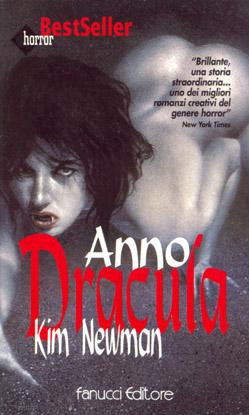 LYZ: Most of your references in the book are British in nature, whether historically or literary. Do you think this poses an obstacle for American readers?
LYZ: Most of your references in the book are British in nature, whether historically or literary. Do you think this poses an obstacle for American readers?KN: It hasn’t so far. I suspect that the Victorian setting – of the first book – has a particular appeal to a certain type of American anglophilia. On their first issue, the books sold better in the US than the UK – which might have been down to marketing rather than inherent qualities. The series becomes more international as it goes on, and much of the fourth book is set in America. I’m sure there are references that are more likely to be picked up by the American than the British reader, and I try to give every character or trope enough reference to stand on its own for folks who don’t have any previous knowledge of them. If you don’t know who, say, Basil Hallward is (he’s the artist who painted the Picture of Dorian Gray), I give him enough build-up for his scene in ANNO DRACULA that it doesn’t matter, and my version of him isn’t quite Oscar Wilde’s anyway. Because the novels are set in an alternate universe, everyone is an alternate version of the people you might or might not know – most obviously, the ones who are vampires in this world.
LYZ: It comes across from the level of detail that you are a film scholar as well as a fiction writer. How does your scholarly work affect your fiction writings and vice versa?
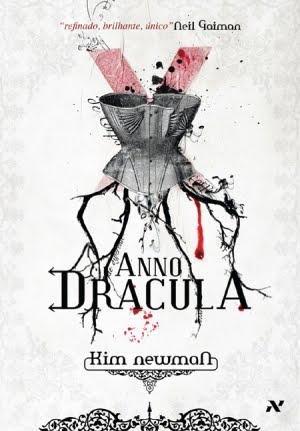 KN: I juggle the two careers and modes of writing to some extent. At the moment, I’m dividing my time in promotion between the new versions of ANNO DRACULA from Titan and a reissue of my non-fiction book about the contemporary horror film NIGHTMARE MOVIES (essentially, the old book and an all-new sequel in one volume) from Bloomsbury. My interests feed each other. Because I have to spend a lot of time thinking about films (and pop culture in general), many of my story ideas grow out of that. Johnny Alucard is much more obviously a book about movies, and the movie business, than the earlier novels in the series (though DRACULA CHA CHA CHA has a lot of Fellini/Cinecitta material). Arthur C. Clarke thought a lot about satellites and rocketry, and so he wrote stories about them. At some point, I want to write a novel set in Hollywood in the 1940s.
KN: I juggle the two careers and modes of writing to some extent. At the moment, I’m dividing my time in promotion between the new versions of ANNO DRACULA from Titan and a reissue of my non-fiction book about the contemporary horror film NIGHTMARE MOVIES (essentially, the old book and an all-new sequel in one volume) from Bloomsbury. My interests feed each other. Because I have to spend a lot of time thinking about films (and pop culture in general), many of my story ideas grow out of that. Johnny Alucard is much more obviously a book about movies, and the movie business, than the earlier novels in the series (though DRACULA CHA CHA CHA has a lot of Fellini/Cinecitta material). Arthur C. Clarke thought a lot about satellites and rocketry, and so he wrote stories about them. At some point, I want to write a novel set in Hollywood in the 1940s.LYZ: You seem like a pop culture encyclopedia with all of your references within your book and in this interview. How do you manage to write so much, research the past, and still follow what is current?
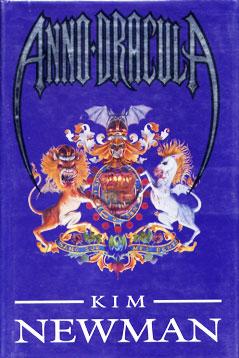 KN: Sometimes, I wonder that too. The thing that’s getting squeezed lately is reading, but I’m trying hard to make more time for it – I’m in the middle of a good vampire novel (Jon Courtenay Grimwood’s THE FALLEN BLADE) at the moment. I’ve watched a couple of direct-to-DVD monster movies (MEGA SHARK VS CROCOSAURUS, WORLD OF THE DEAD: THE ZOMBIE DIARIES 2) today, and read a collected comic series (ANT MAN & THE WASP). I’ll watch THE VIOLENT KIND now, and maybe some old TV (I’m going through box sets of SGT BILKO, THRILLER, VILLAINS, THE AVENGERS and THE SWEENEY). This is on top of a solid session on the extras for the next book to be reissued, THE BLOODY RED BARON: ANNO DRACULA 1918. Yes, it’s a lot to take in, and I’ve piles of books, comics and DVDs I’ve not got to yet.
KN: Sometimes, I wonder that too. The thing that’s getting squeezed lately is reading, but I’m trying hard to make more time for it – I’m in the middle of a good vampire novel (Jon Courtenay Grimwood’s THE FALLEN BLADE) at the moment. I’ve watched a couple of direct-to-DVD monster movies (MEGA SHARK VS CROCOSAURUS, WORLD OF THE DEAD: THE ZOMBIE DIARIES 2) today, and read a collected comic series (ANT MAN & THE WASP). I’ll watch THE VIOLENT KIND now, and maybe some old TV (I’m going through box sets of SGT BILKO, THRILLER, VILLAINS, THE AVENGERS and THE SWEENEY). This is on top of a solid session on the extras for the next book to be reissued, THE BLOODY RED BARON: ANNO DRACULA 1918. Yes, it’s a lot to take in, and I’ve piles of books, comics and DVDs I’ve not got to yet.LYZ: How has reception to the book changed since it was first published? Do you get more attention now that vampires are more popular?
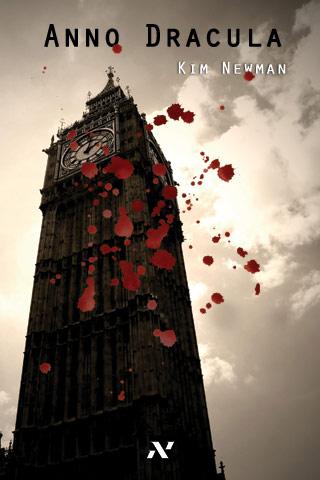 KM: It was well-received in 1992, and even more enthusiastically now. Because it’s been out of print (for dull publishing reasons) it had a minor reputation as a cult book, which is to say it was hard to find so people who had read it could feel a bit smug. I’ve been touched by the testimonials from old readers who’ve bought new copies to replace books that fell apart or (and this is a common story) were lent out and never returned. But I’m also glad to welcome many new readers, for whom it’s essentially a new book. Because of the period setting, it’s dated a lot less than some of my novels with contemporary or even futuristic settings (which now seem odd because of the lack of mobile phones and computers). Vampires were popular in 1992 – coincidentally, the book came out at the same time as the Coppola film, and Anne Rice was at the height of her success – so I think the added attention now is as much down to the splendid job Titan have done in repositioning the books in the market. Simon & Schuster, who had the book first in the UK, did a wonderful hardback (it still has one of my favourite cover images), but weren’t quite set up then to make it work in paperback – though Avon did well with it in the US. This is the first time the series has been issued in English in uniform editions so they’ll look nice together on the shelf, which I’m delighted by. There has been a certain amount of ‘well, if you like [insert name of vampire franchise], then you’ll love Anno Dracula’ recommendation from older fans to younger readers, which pleases me (of course). It may also be that the media landscape of 2011 has changed so that I now get more instant feedback than I did in 1992. Instead of waiting for reviews to dribble in, there are twitter updates and online interviews like this. It’s available as an e-book, now, so that’s another format which didn’t even exist when the book was written.
KM: It was well-received in 1992, and even more enthusiastically now. Because it’s been out of print (for dull publishing reasons) it had a minor reputation as a cult book, which is to say it was hard to find so people who had read it could feel a bit smug. I’ve been touched by the testimonials from old readers who’ve bought new copies to replace books that fell apart or (and this is a common story) were lent out and never returned. But I’m also glad to welcome many new readers, for whom it’s essentially a new book. Because of the period setting, it’s dated a lot less than some of my novels with contemporary or even futuristic settings (which now seem odd because of the lack of mobile phones and computers). Vampires were popular in 1992 – coincidentally, the book came out at the same time as the Coppola film, and Anne Rice was at the height of her success – so I think the added attention now is as much down to the splendid job Titan have done in repositioning the books in the market. Simon & Schuster, who had the book first in the UK, did a wonderful hardback (it still has one of my favourite cover images), but weren’t quite set up then to make it work in paperback – though Avon did well with it in the US. This is the first time the series has been issued in English in uniform editions so they’ll look nice together on the shelf, which I’m delighted by. There has been a certain amount of ‘well, if you like [insert name of vampire franchise], then you’ll love Anno Dracula’ recommendation from older fans to younger readers, which pleases me (of course). It may also be that the media landscape of 2011 has changed so that I now get more instant feedback than I did in 1992. Instead of waiting for reviews to dribble in, there are twitter updates and online interviews like this. It’s available as an e-book, now, so that’s another format which didn’t even exist when the book was written.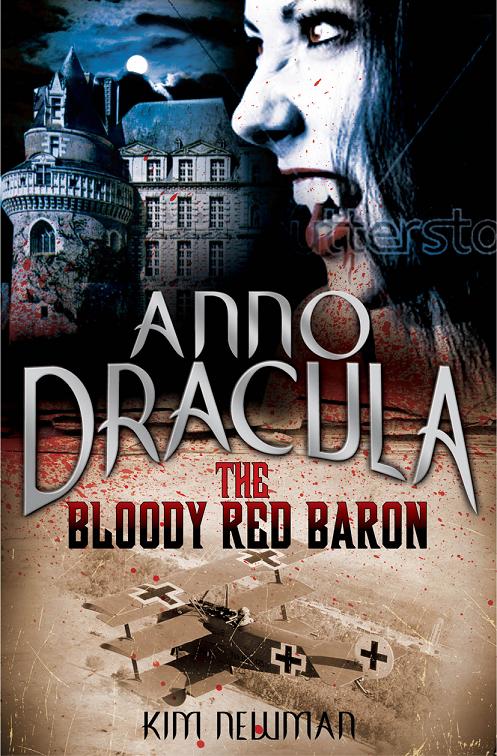 LYZ: In this edition of ANNO DRACULA you include parts of your screenplay adapting the piece. Who would be your dream cast and crew?
LYZ: In this edition of ANNO DRACULA you include parts of your screenplay adapting the piece. Who would be your dream cast and crew?KN: Mostly people who are gone, sadly. I would have loved it to be turned into Stanley Kubrick’s ANNO DRACULA, though I know many writers were exhausted to the point of early death by working with him. I’d still like the Dracula of the final scenes to be some CGI scramble of Bela Lugosi, Christopher Lee, Jack Palance, Frank Langella and Louis Jourdan. I wrote in parts for Hammer Films character actors like Miles Malleson and Michael Ripper (both deceased), and it would have been nice – though impractical – to have the minor famous Victorian characters from literature and history played by people who had done the roles before: which would give Christopher Lee about six roles – my version of Mycroft Holmes is the one he played in Billy Wilder’s THE PRIVATE LIFE OF SHERLOCK HOLMES. Quite a few of the ANNO DRACULA cast of characters have appeared in recent films – FROM HELL, THE LEAGUE OF EXTRAORDINARY GENTLEMEN, SHERLOCK HOLMES, various DRACULA’s – but I’m not sure that associations with these would benefit an Anno Dracula movie. Maybe Eddie Marsan might be fun as the Vampire Lestrade. Emily Blunt with fangs as Queen Victoria? It’s also possible that Gary Oldman, twenty years on, would be a nice last-reel cameo as Dracula. The characters I made up, as opposed to found or borrowed, fit into types rather than seeming written for specific actors, but there’s always a pool of suitable dashing British heroes, lively French minxes and posh corset-wearing English debutantes around.
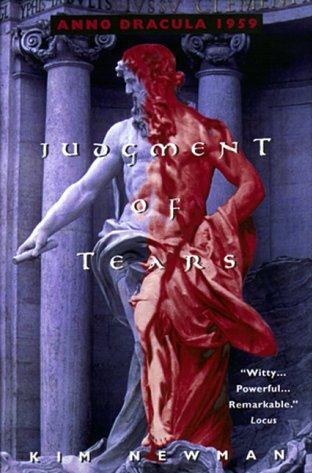 LYZ: Some argue that the media market is flooded with vampires and that the trend has worn itself out. I happen to believe that vampires have always been part of our culture and will remain integral, though maybe not as prominent. What is your take on this?
LYZ: Some argue that the media market is flooded with vampires and that the trend has worn itself out. I happen to believe that vampires have always been part of our culture and will remain integral, though maybe not as prominent. What is your take on this?KN: Obviously, I’m in the second camp. Certainly, some vampire franchises have been so huge that they’ve outworn their welcome beyond their core fandoms – though sometimes that’s enough to sustain even a blockbuster. Not every vampire book or movie is a huge hit, though – did anyone else see CIRQUE DU FREAK: THE VAMPIRE’S APPRENTICE? I try to be a vampire completist – even the stuff I hate feeds into the ongoing ANNO DRACULA series – but even I gave up on THE VAMPIRE DIARIES after three or four episodes. And I’ve barely dented the reading pile of recent vampire fiction – I’ve read TWILIGHT, but none of the other Meyer books, and very little of the boom in YA or paranormal romance stuff.
LYZ: Since you are in the camp that believes vampires are here to stay, what part of them makes them so appealing to generation after generation?
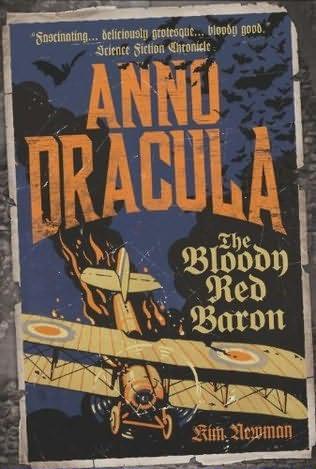 KN: To me, the vampire is the most versatile, most complicated monster. Unlike a werewolf or a zombie, you can have a conversation with one – and though they have the kind of overriding savage lust for blood and violence that characterises lesser monsters, they can think too and either moderate or justify their habits. Also, from generation to generation, they can have different meanings. Karl Marx used vampirism as a metaphor for capital feeding off the proletariat, which is a sub-text in all those films and books about aristocrats bleeding peasants dry. They can also embody disease, addiction, dependence, personality disorders or any one of a dozen other interesting human traits. Before Anne Rice, all vampire stories tended to assume all vampires would have the same basic character – rather the way that Silver Age DC comics gave all their heroes the same characterisation – and the only relationships they could have were master/minion or monster/victim. Rice introduced the idea that vampires might not all be the same, and since then there have been a lot more ways of presenting them, from lovelorn romantics through serial killing fiends and diabolical masterminds to something very like superheroes. Suzy McKee Charnas, who wrote one of my favourite vampire novels (THE VAMPIRE TAPESTRY), said she liked them because they were ‘such snappy dressers’. There’s that too.
KN: To me, the vampire is the most versatile, most complicated monster. Unlike a werewolf or a zombie, you can have a conversation with one – and though they have the kind of overriding savage lust for blood and violence that characterises lesser monsters, they can think too and either moderate or justify their habits. Also, from generation to generation, they can have different meanings. Karl Marx used vampirism as a metaphor for capital feeding off the proletariat, which is a sub-text in all those films and books about aristocrats bleeding peasants dry. They can also embody disease, addiction, dependence, personality disorders or any one of a dozen other interesting human traits. Before Anne Rice, all vampire stories tended to assume all vampires would have the same basic character – rather the way that Silver Age DC comics gave all their heroes the same characterisation – and the only relationships they could have were master/minion or monster/victim. Rice introduced the idea that vampires might not all be the same, and since then there have been a lot more ways of presenting them, from lovelorn romantics through serial killing fiends and diabolical masterminds to something very like superheroes. Suzy McKee Charnas, who wrote one of my favourite vampire novels (THE VAMPIRE TAPESTRY), said she liked them because they were ‘such snappy dressers’. There’s that too.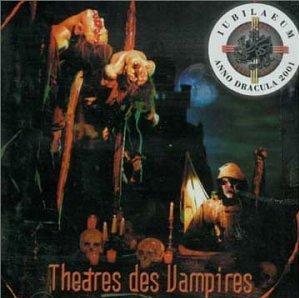 LYZ: You say that you will never explore the Wild West story you set up because of Uwe Boll’s BLOODRAYNE DELIVERANCE. Seeing as that movie was not well received or well-known, do you think that is a decision you may reconsider in a few years?
LYZ: You say that you will never explore the Wild West story you set up because of Uwe Boll’s BLOODRAYNE DELIVERANCE. Seeing as that movie was not well received or well-known, do you think that is a decision you may reconsider in a few years?KN: I never say never, but at present it’s unlikely. If I can think of a different vampire Western I might do it since I wanted to play with that arena – I like the vampire gunslinger from CURSE OF THE UNDEAD, and all the John Ford characters, and pulp/dime novel cowboys, and that masked man who shoots silver bullets. I’m not the only author who’s backed off on a long-gestating project because something else came out and covered the territory. If I promise not to tread on BLOODRAYNE DELIVERANCE, do you think Uwe Boll will promise not to make another film based on a computer game in return?
LYZ: There is not one consistent trait of a vampire besides their parasitic nature over the course of vampiric literature and film. How did you come up with your vampire mythos, especially the grotesque turning process?
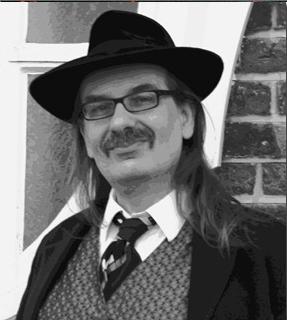 KN: I knew that I wanted to include lots of different types of vampires because I wanted a world where Bram Stoker’s vampires, Anne Rice’s vampires, John Polidori’s VAMPYRE and Carl Dreyer’s VAMPYR could co-exist, and where there was room for everyone from Blacula to the Count from Sesame Street. That forced me to go with a system whereby there were different vampire bloodlines with varying habits, weaknesses and capabilities. Some of my vampires can’t go out in daylight but some can, some turn into bats and wolves but some only pull the fangface/knobby forehead expression from FRIGHT NIGHT or BUFFY (I think Blacula was the first movie with this trait). The dominant mode of vampirism in the first novel is broadly that from Stoker, since the whole book depends on his system: it’s implied in Dracula that a victim needs to drink the vampire’s blood to turn, and that’s a useful device. The notion that turning into a vampire was a risky business, with a high percentage of fatal failures, is a plot necessity to keep the numbers of vampires manageable and explain why not everyone would even try to turn. I extrapolated from the many, many versions of Dracula – and the many, many conscious imitations like COUNT YORGA and SALEM’S LOT – and concluded that for every Dracula, who survive several centuries as a vampire, there are several dozen Lucys, who barely last a week. Otherwise, I picked and mixed bits and pieces, and came up with a few things of my own – some of which I’ve seen done, perhaps by coincidence perhaps by influence, in subsequent vampire fictions. The bit about using vampire blood as a drug, which I set up in Andy Warhol’s DRACULA and THE OTHER SIDE OF MIDNIGHT – novellas which will be included in Johnny Alucard – is in TRUE BLOOD, for instance.
KN: I knew that I wanted to include lots of different types of vampires because I wanted a world where Bram Stoker’s vampires, Anne Rice’s vampires, John Polidori’s VAMPYRE and Carl Dreyer’s VAMPYR could co-exist, and where there was room for everyone from Blacula to the Count from Sesame Street. That forced me to go with a system whereby there were different vampire bloodlines with varying habits, weaknesses and capabilities. Some of my vampires can’t go out in daylight but some can, some turn into bats and wolves but some only pull the fangface/knobby forehead expression from FRIGHT NIGHT or BUFFY (I think Blacula was the first movie with this trait). The dominant mode of vampirism in the first novel is broadly that from Stoker, since the whole book depends on his system: it’s implied in Dracula that a victim needs to drink the vampire’s blood to turn, and that’s a useful device. The notion that turning into a vampire was a risky business, with a high percentage of fatal failures, is a plot necessity to keep the numbers of vampires manageable and explain why not everyone would even try to turn. I extrapolated from the many, many versions of Dracula – and the many, many conscious imitations like COUNT YORGA and SALEM’S LOT – and concluded that for every Dracula, who survive several centuries as a vampire, there are several dozen Lucys, who barely last a week. Otherwise, I picked and mixed bits and pieces, and came up with a few things of my own – some of which I’ve seen done, perhaps by coincidence perhaps by influence, in subsequent vampire fictions. The bit about using vampire blood as a drug, which I set up in Andy Warhol’s DRACULA and THE OTHER SIDE OF MIDNIGHT – novellas which will be included in Johnny Alucard – is in TRUE BLOOD, for instance.LYZ: If vampires existed, and you had the choice to be turned, would you do it?
 KN: Tough question. It would depend on the type of vampire. I could handle being the vampire-lite type epitomised in ANNO DRACULA by the character of Geneviève, but would be a lot less keen on being a feral blood-junkie or a whiny effete fascist. Though Geneviève is an example, I’m not entirely comfortable with modern vampire characters that somehow excuse the vampire from drinking human blood to the point of killing people. This strikes me as a wish-fulfilment cop-out. Living through centuries has a certain appeal, if only to see how the story turns out. Selfishly, I think I could cope with everyone else growing old and dying because new people would come along to replace them. I’d rather extend my longevity through drinking an elixir like Fu Manchu (or Tarzan, Fu Manchu or Nick Fury), bathing in blue flame like Ayesha in She or having naturally slower ageing processes and a healing ability like Highlander or Wolverine – though, now I come to think of it, few of those examples suggest a long and happy life.
KN: Tough question. It would depend on the type of vampire. I could handle being the vampire-lite type epitomised in ANNO DRACULA by the character of Geneviève, but would be a lot less keen on being a feral blood-junkie or a whiny effete fascist. Though Geneviève is an example, I’m not entirely comfortable with modern vampire characters that somehow excuse the vampire from drinking human blood to the point of killing people. This strikes me as a wish-fulfilment cop-out. Living through centuries has a certain appeal, if only to see how the story turns out. Selfishly, I think I could cope with everyone else growing old and dying because new people would come along to replace them. I’d rather extend my longevity through drinking an elixir like Fu Manchu (or Tarzan, Fu Manchu or Nick Fury), bathing in blue flame like Ayesha in She or having naturally slower ageing processes and a healing ability like Highlander or Wolverine – though, now I come to think of it, few of those examples suggest a long and happy life.LYZ: ANNO DRACULA became available again this June and can be found at major bookstores such as Barnes & Noble or numerous online sites such as Amazon. You can find more information about the book at the publisher’s websiteand more information about Kim Newman himself at his site.
Lyzard is actually Lyz Reblin, a film student at Chapman University. Lyz’s love for comics stems from an internship at Dark Horse Entertainment as a freshman, which may explain why some of her favorite comic book writers are Gerard Way and Steve Niles. You can find her on Facebook, but only if you follow her band: Castle Town Convicts (possibly a Zelda reference?).
Proofs, co-edits & common sense provided by Sleazy G
